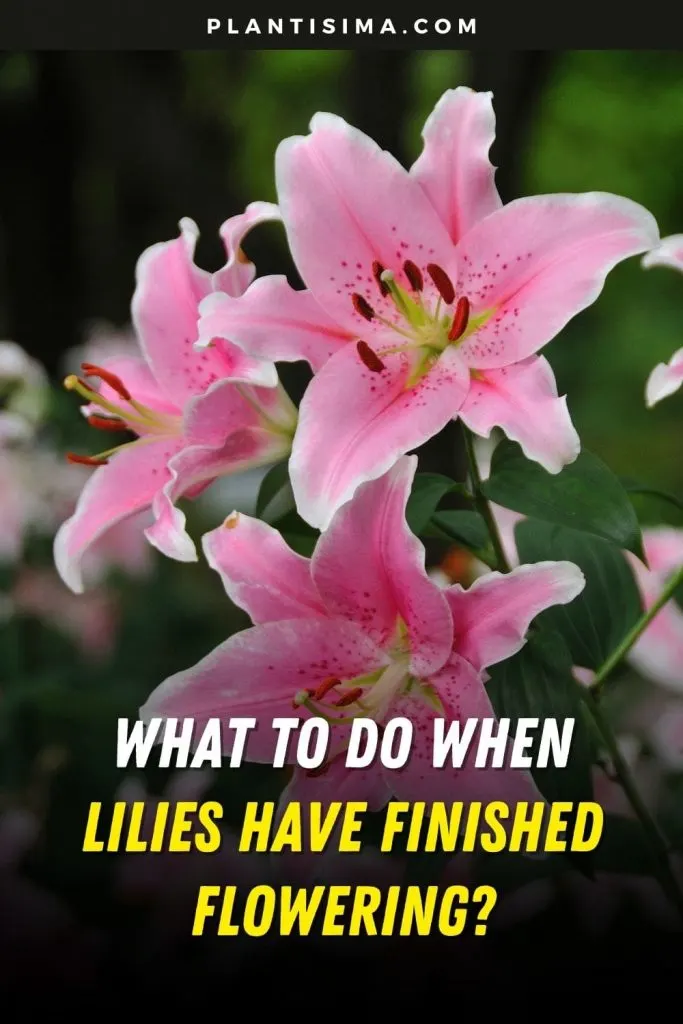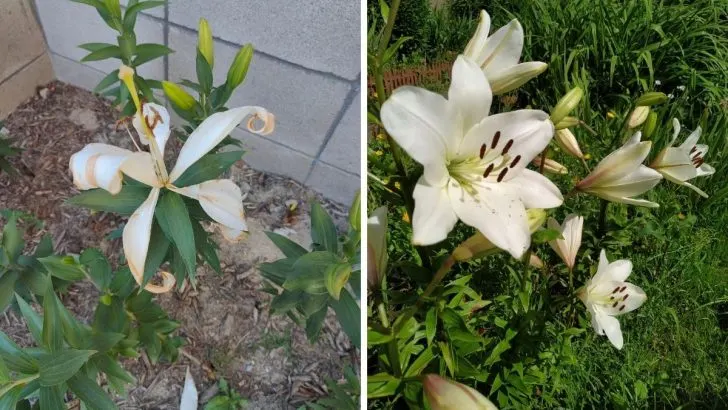Today we’ll talk about what to do when lilies have finished flowering. These wonderful flowers that come in many color varieties are great indoor plants such as outdoor plants, but they have one tiny “problem” that we’ll discuss today.
In their blooming season, which lasts for about 2 to 3 weeks, they’ll give amazing colorful flowers and you’ll enjoy their look and their fragrances too. After a blooming season flowers will dry out and you’ll have to react.
To make sure what to do after lilies have finished flowering we’ll discuss that more below, and along with that, we bring you lilies care guide, the symbolism of lilies flower, and last but not the least, the FAQ section before the end.
Let’s find out what to do when lilies have finished flowering.
About Lily Plants – Lily Bulbs Features
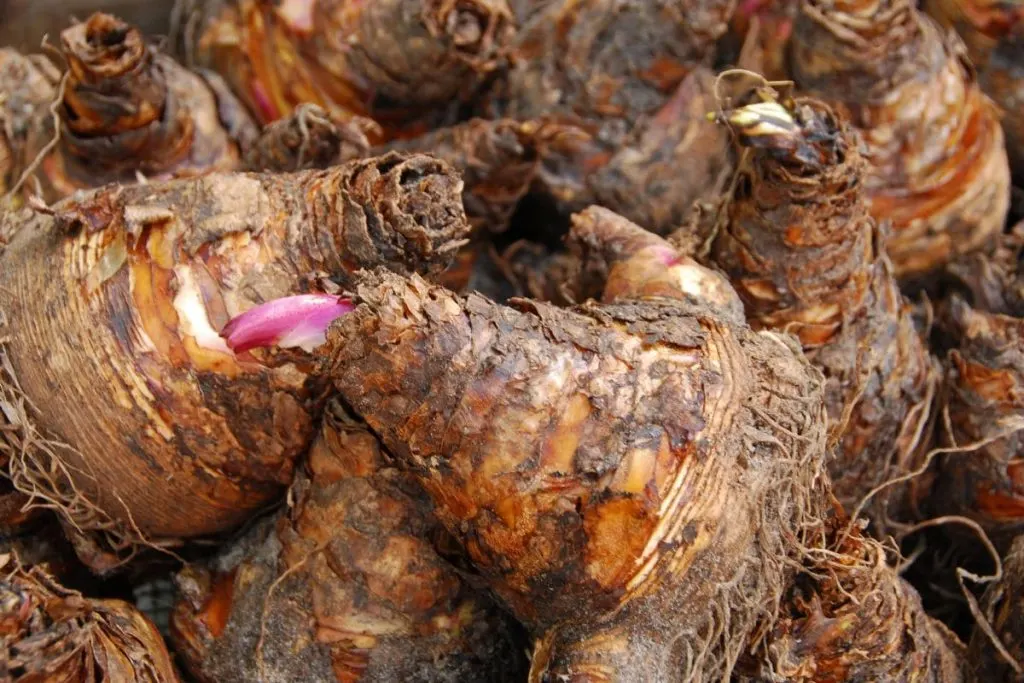
Lily (Lilium) is a genus of monocotyledons from the Liliaceae family. There are about 90 species of lilies, and wild(er) species can be found in Asia, Europe, and America. The name lily comes from the Greek word leirion and the Roman word Lilium.
The underground stem of the lily is a bulb from which emerges a shoot with individual shield flowers. The leaves of the flower are lanceolate, linear, or oval. There are no leaves on the upper part of the stem.
The flowers are large, bell-shaped, or funnel-shaped. Most lilies have nice light green tall stems and nice tiny green leaves. These plants are mostly attacked by red lily beetles and lily beetle black, so watch out for those!
After The Blooms Period – What To Do When Lilies Have Finished Flowering
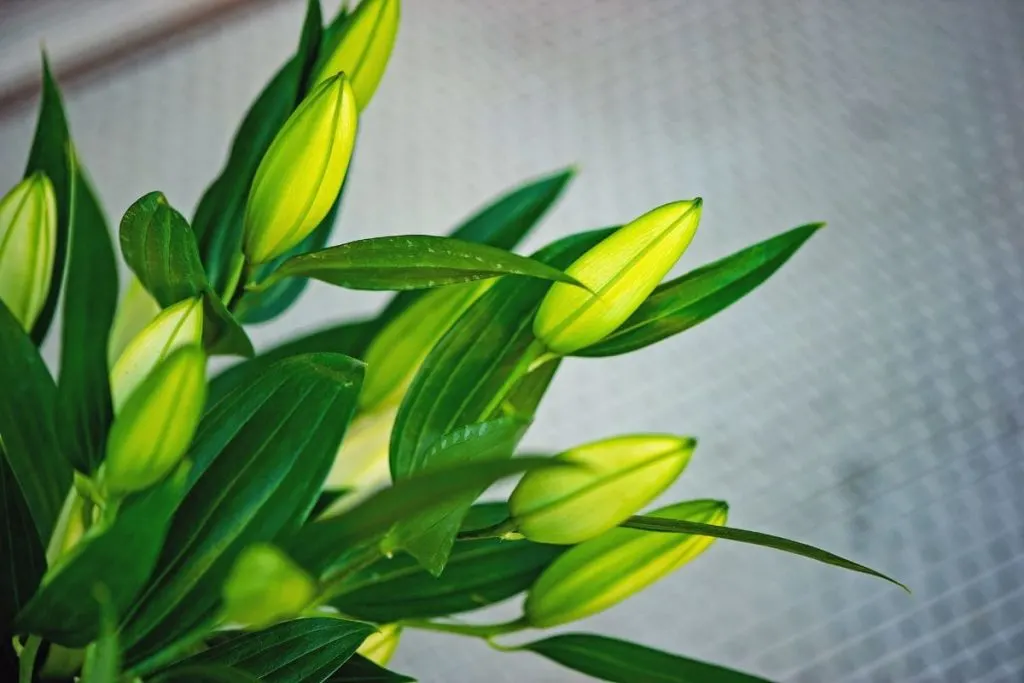
Plant lilies, no matter how wanted and wonderful they are have a problem as well. After the blooming period, lily flowers are stuck in the spent flowers phase and you need to learn how to deal with it and what to do when lilies have finished flowering.
This happens to all of types lilies, especially calla lilies that need a really special treatment over the wintertime.
Unfortunately, after the blooming period, the foliage begins to fade away and starts to change to a yellow color. In early spring, blooms look wonderful, but wintertime and late fall are sad seasons for this plant.
We’re going to learn what to do when lilies stop flowering.
What To Do When Lilies Have Finished Flowering? Dead Flowers Issue
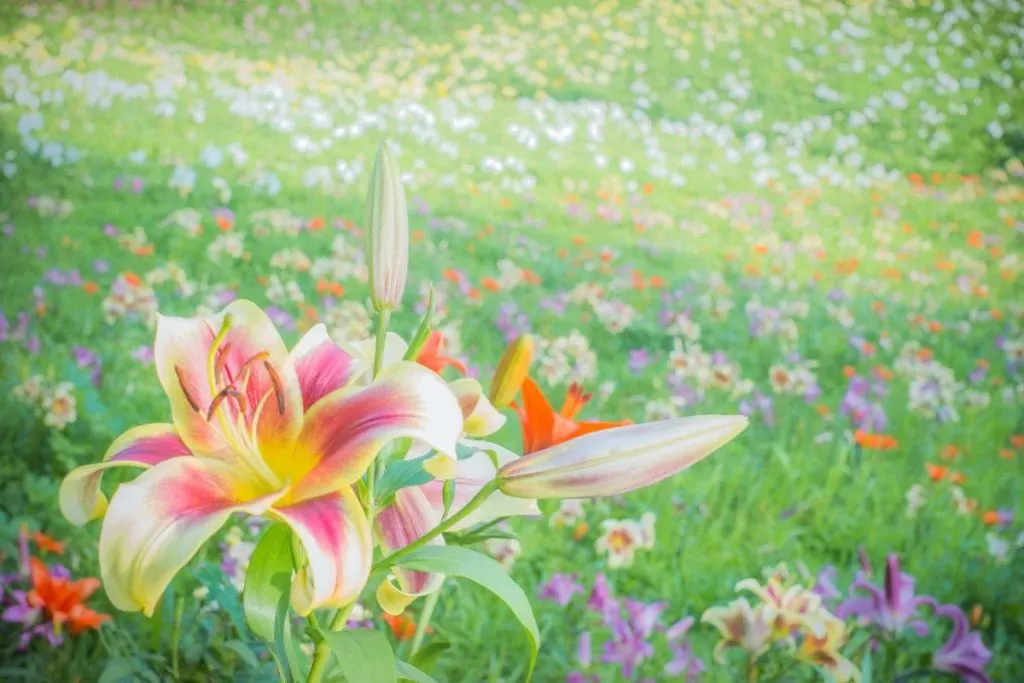
When the flowering period ends and the flowers on the lily wither, you need to remove the withered flowers. If you do not remove the wilted flowers, your plant will use its plant energy to produce seeds.
Although you will remove the flowers, this does not apply to the leaves. During that period, the leaves will still have a greenish color on them and this rule does not apply to them. Leave the withered leaves until they take on a yellow-brown color, when they look more dry, only then remove the leaves.
Deadheading Process After The Flowering Of Lilies – What To Do When Lilies Have Finished Flowering
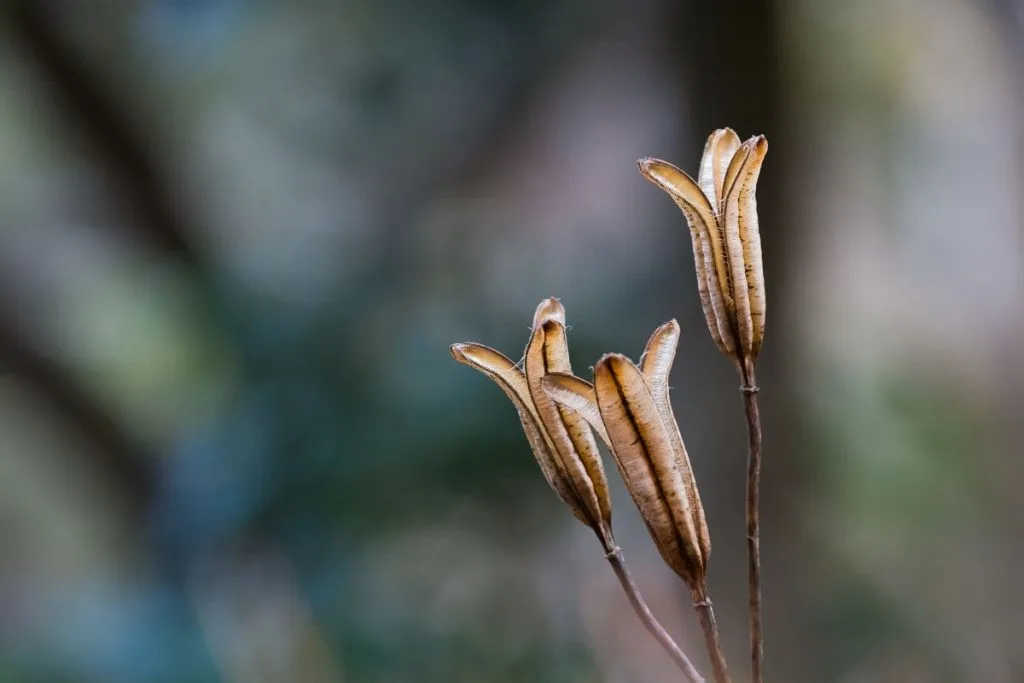
Deadheading lilies are recommendable because they will sort of prepare and encourage your plant for new growth and new bulbs for the next spring blooming time. What deadheading means is that you cut lilies’ stems with sharp scissors or a knife after they’ve finished blooming. If you want to make sure you’ve done it right, do it like this:
- prepare a pair of sharp scissors or a knife;
- make sure you recognize all the dead ends that need to be removed (dead ends on the plants can affect their further growth);
- cut them off carefully so no end is damaged while cutting them off;
- place them in a half sunny-half shady place after pruning.
Unfortunately, no matter what you do, lilies bloom only once per season. There is something called deadheading lilies, but deadhead lilies blooms won’t happen again, that’s it for your lilies for that season.
What To Do When Lilies Have Finished Flowering? Do Indoor Lilies Flower Again After First Flowering? Next Year’s Growth
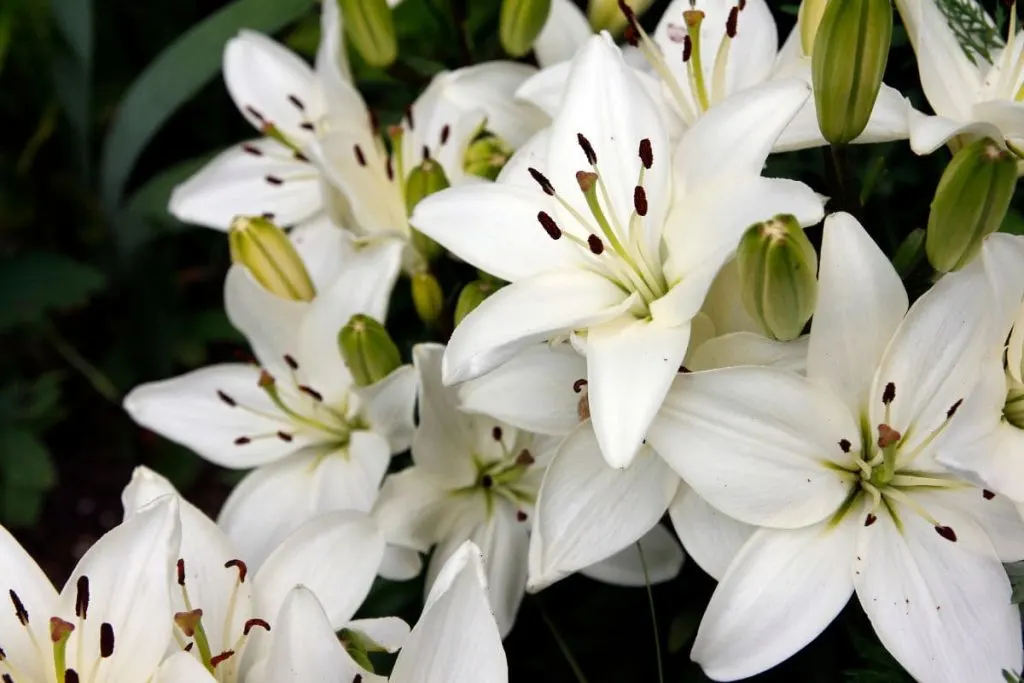
As we hinted above, flowers will come back in the next blooming season. The lifespan of lilies is from 3 to 6 years if you take care of them.
Then every other season, if pruned well and taken care of in a good way, it will give you new growth. Most bulbs bloom for 2 or 3 weeks per year.
Types Of Lilies Indoors – Popular Lily Species
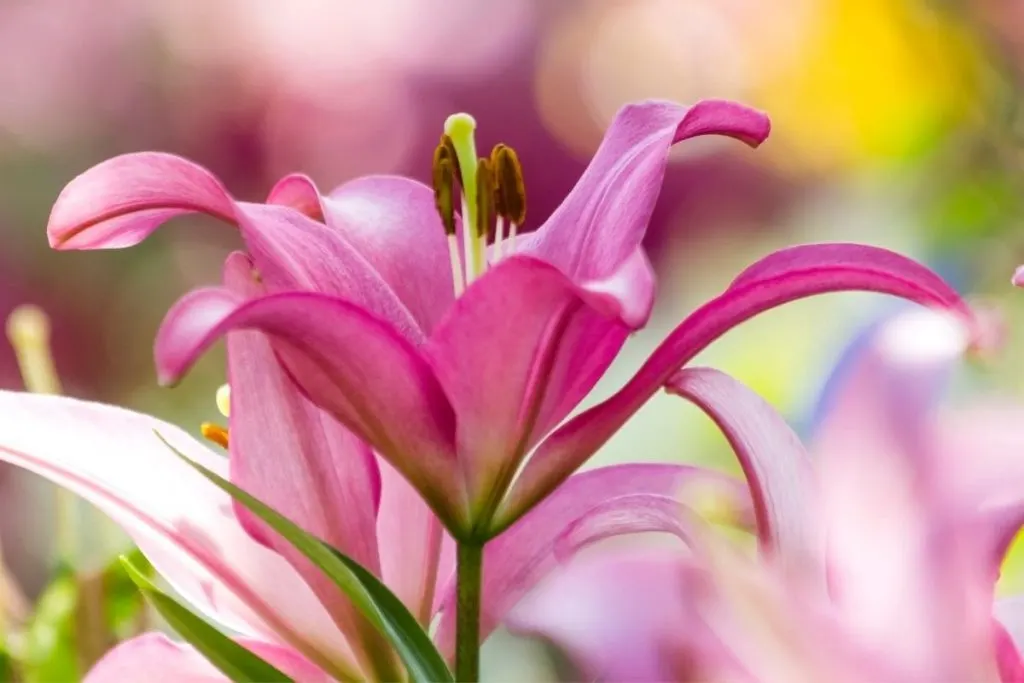
If you once gave your florist the freedom to make a bouquet for you, he must have put at least one or two lilies in that bouquet. But that’s the trick, if you put a white lily, you will also put a yellow one, then a red one, etc.
There are over 90 types of lilies, but only the 4 most famous ones that we all regularly see in flower shops. Let’s learn something about lily types.
1. More About Asiatic Lilies
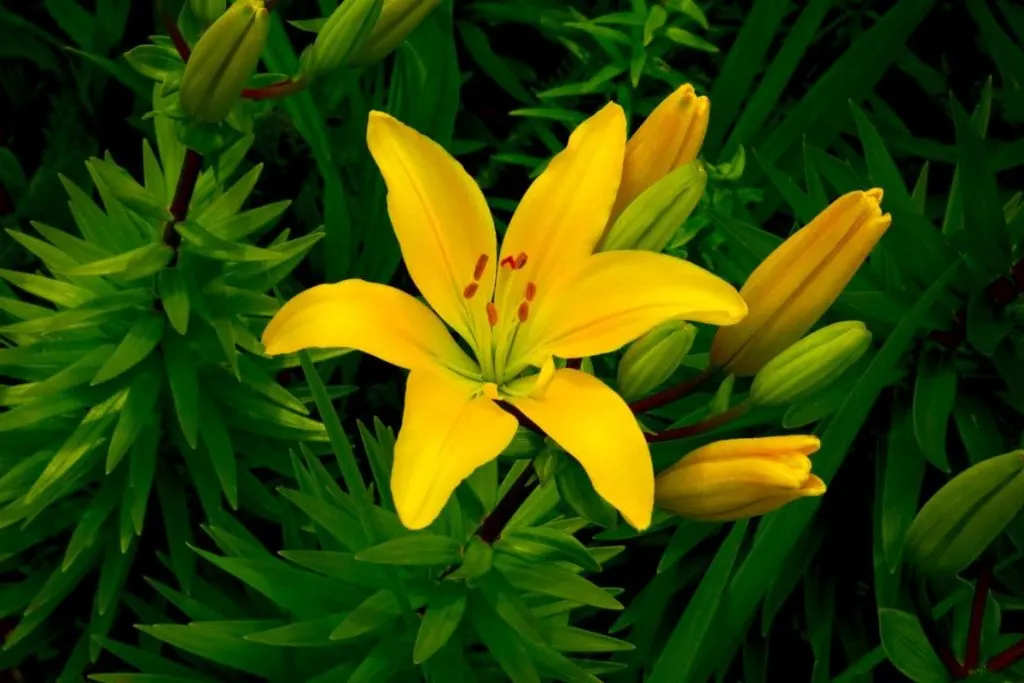
These lilies come from various Asian species including l. Amabile, L. bulbiferum, L. callosum, L. cernum, L. concolor, L. dauricum, L. davidii, L. lancifolium, L. lankongense, L. Leichtlinii, L. pumpilum, L. wilsonii. They are great for planting outdoors and indoors.
The flowers are produced in clusters or shields and are usually odorless. The leaves are narrowly ovated and arranged alternately. They come in most amazing colors such as bright pink, dark yellow, dark purple, and coral red.
They symbolize marriage and purity.
2. Easter Lilies Flower Type
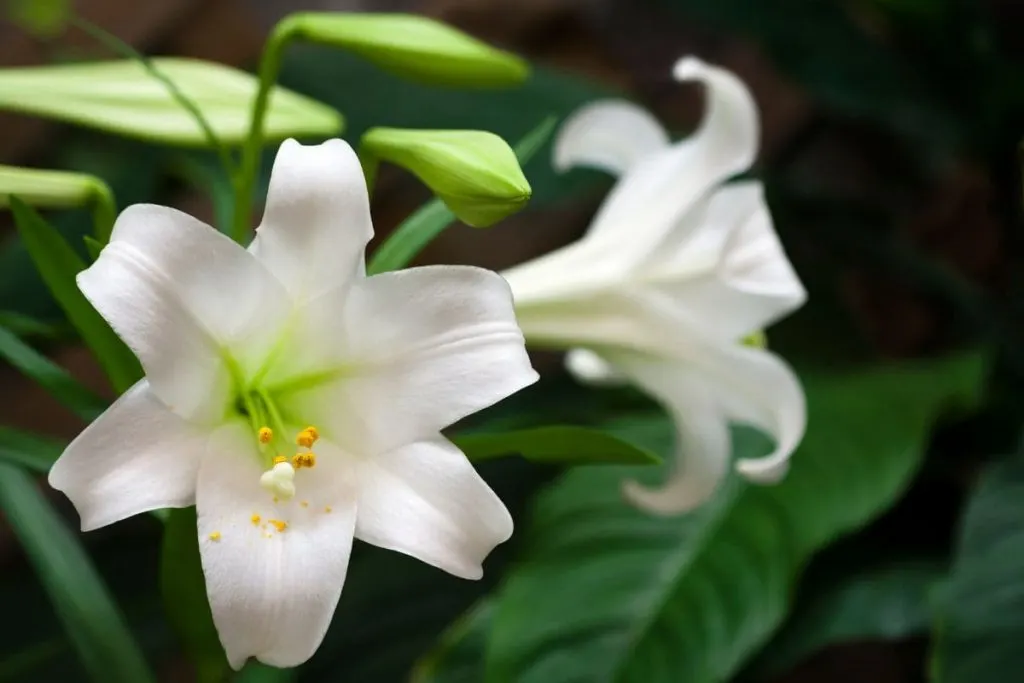
Also called Bermuda lily is an amazing and most popular type of lily flower. They are white, gentle, and have an amazing smell. They are great indoor plants.
This lily type is the type that’s most used in flower arrangements and floral arrangements.
Since it’s white and so pure, it symbolizes purity, rebirth, pure love, and hope.
3. Don’t Forget Trumpet Lilies
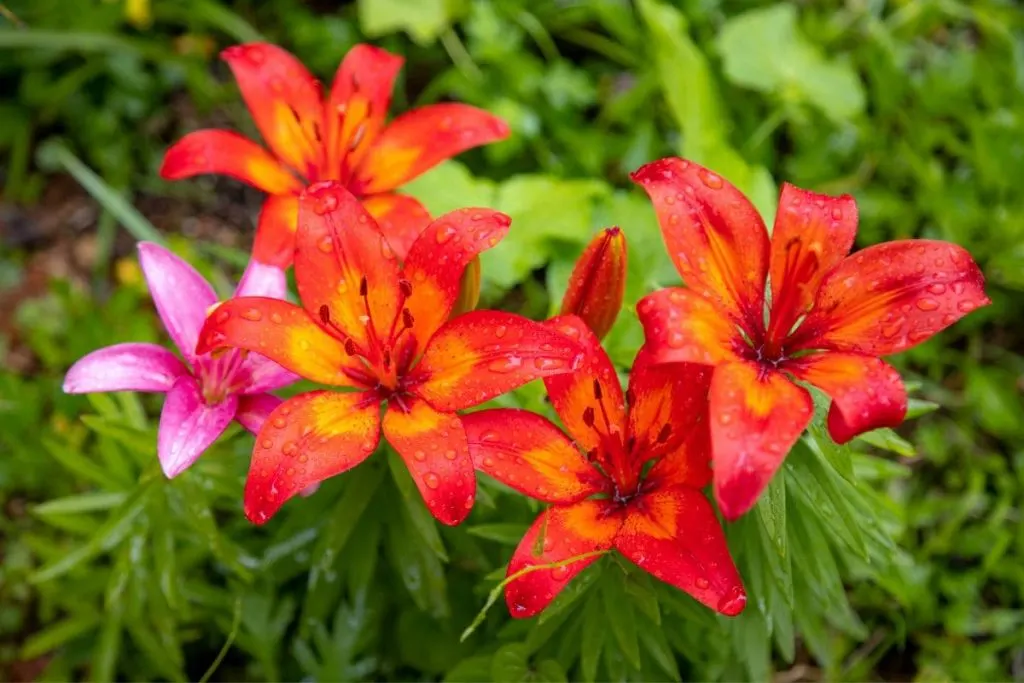
They come from Asian species, including L henryi, L. leucanthum, L. regale, L. sargentiae, and L. sulphureum. Trumpet lilies bear clusters or shields of usually fragrant flowers. They are better outdoor than indoor plants.
The leaves are elliptic to flat, alternate, or spirally compound. Trumpet lilies and Oriental lilies are used for perfume scents mostly. They have a strong humming smell. Unlike Asiatic lilies, they come in a bit lighter color shades such as white, yellow, and a brighter pink color.
This lily flower symbolizes luck and hope.
4. Oriental Lilies Are Amazing Too
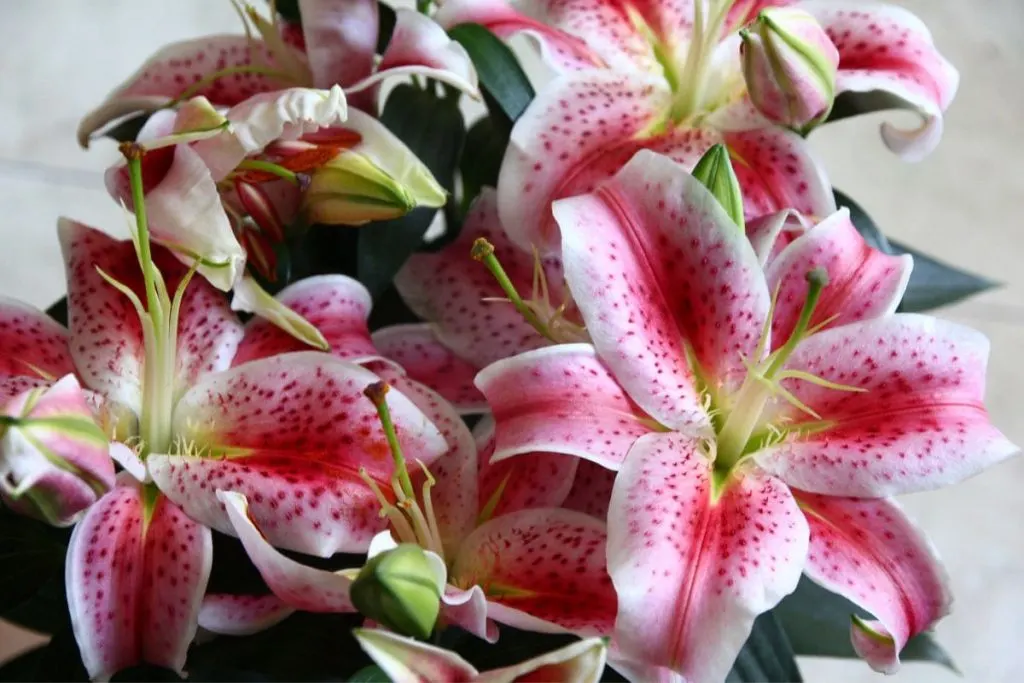
They come from East Asian species such as L. lexandrae, L. auratum, L. japonicum, L. nobilissimum, L. rubellum, and L. speciosum, as well as their hybrids with the species L. henryi. Their flowers are produced in clusters or panicles and are often fragrant. Oriental lilies are better indoor than outdoor plants.
The leaves are lanceolate and alternate. This type of lily flower has 2 colors on its flowers, and when you get closer, you can even see tiny dots that are usually black. It’s truly a magical flower.
Just like easter lilies, they symbolize purity ad rebirth.
Planting Lilies-Lilies Care Guide
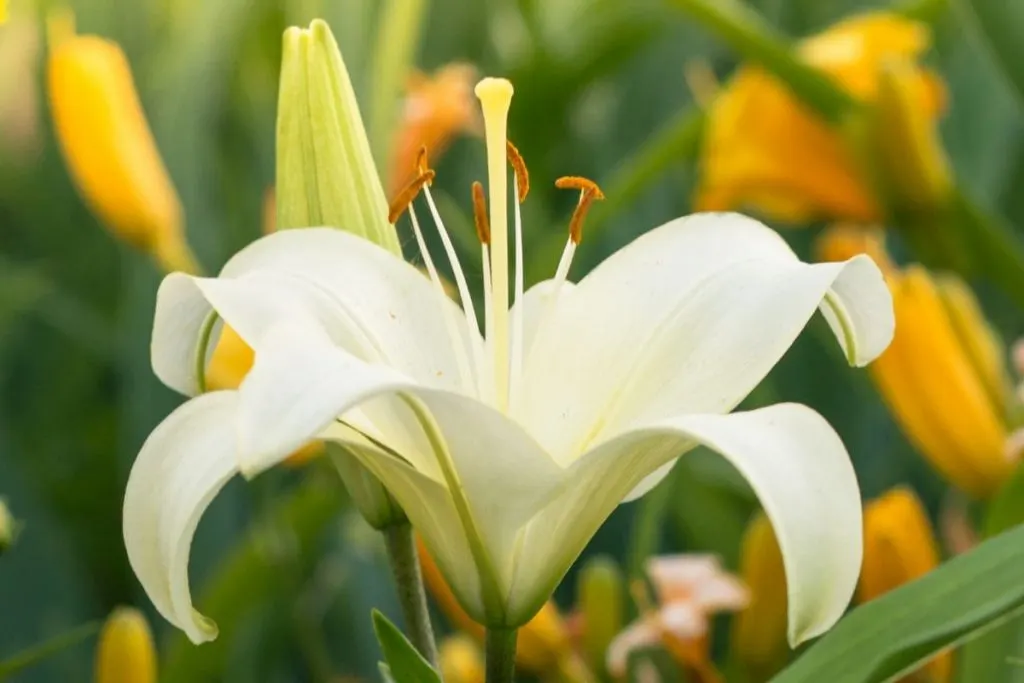
Once that growth begins and their growing season appears, you’ll have to do constant care for these wonderful flowers. As scary as it sounds, their care guide isn’t hard.
Once that flowering begins, might be a bit hard, but the entire plant is super easy to be taken care of and you don’t have to worry. After reading this below, you’ll feel like you’ve had lilies in your home forever. Let’s learn more about these soft bulbs care.
Light Conditions For Lilies
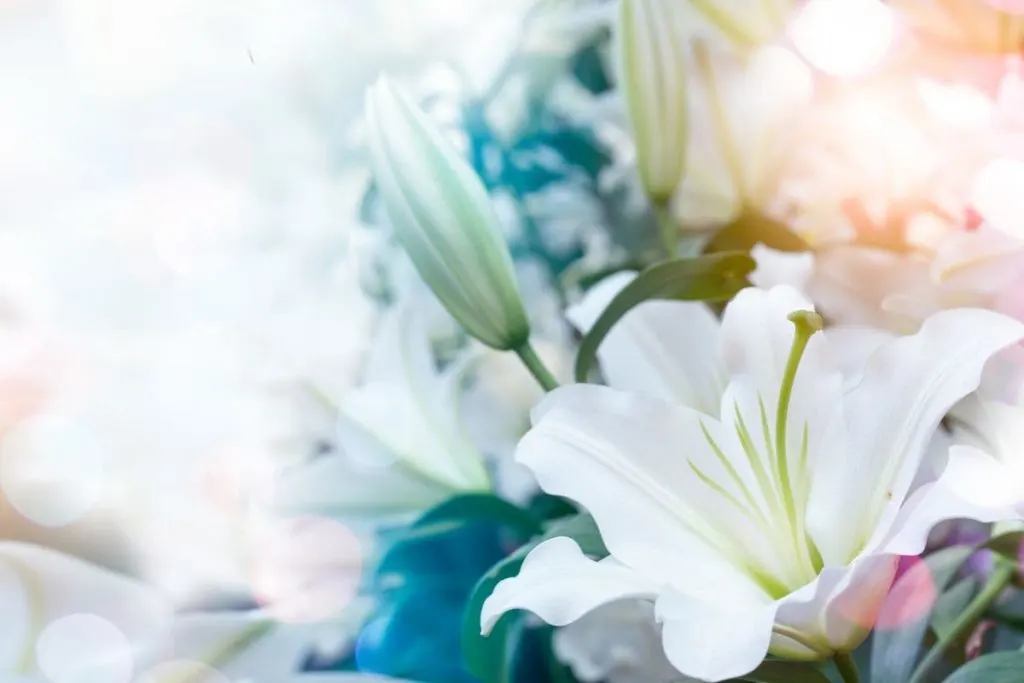
Two words will describe their need for light the best: full sun. Lilies just have to sunbathe all day long. If not all day long, at least for 6 to 8 hours per day. Partial shade can be good when combined with direct sunlight.
Shade or many hours isn’t suitable for this plant, especially when it’s their blooming period. Keep their feet in the shade, and their leaves and flower in sun. Feet in shade will keep their roots cool and this plant needs that.
Watering Routine For Lily Flowers
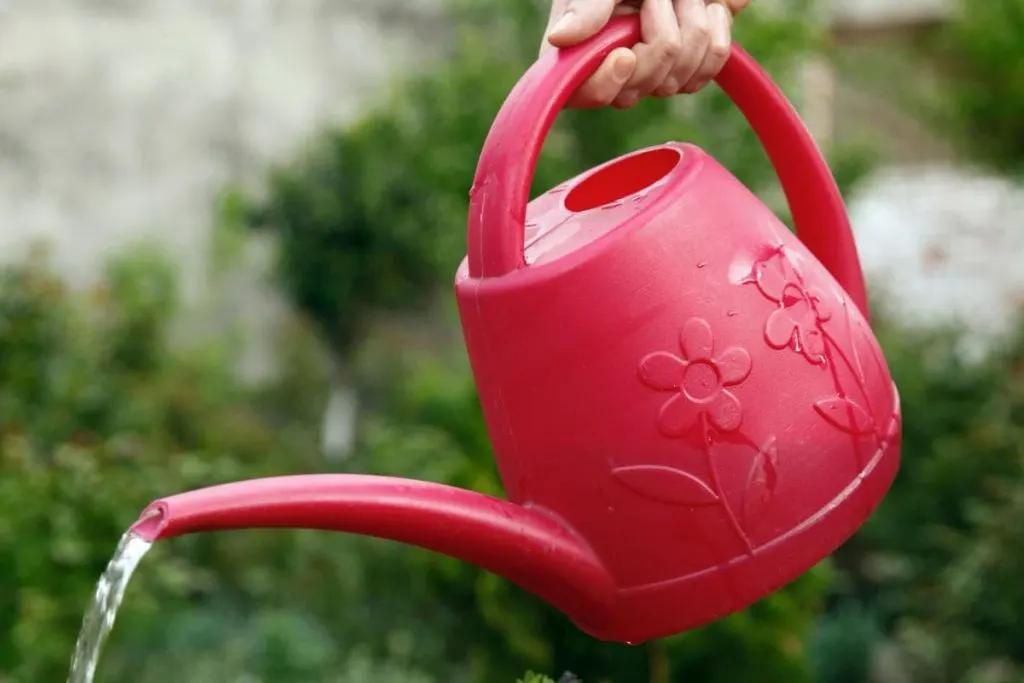
Water lilies once per week, their watering routine is as simple as that. If you do it more than once a week for some time, it can lead to an excessive watering schedule with can lead to root rot, droopy lily plant, and many other issues.
The watering routine can create many issues so be careful! However, in wintertime, it should be watered fortnightly. Tap water is fine if you drink that same tap water as well.
Soil Type For Lilies
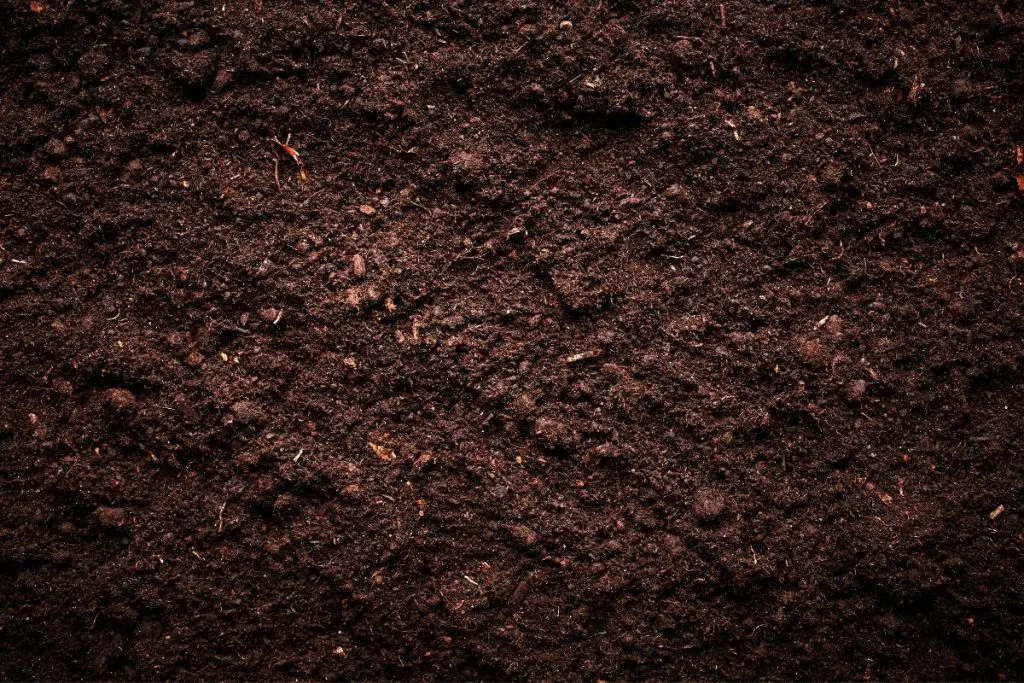
The type of soil in which you grow your lilies must be well-drained soil, by no means dry, especially when the temperatures are warm outside. Lilies do not even tolerate acidic soil, so pay attention to the PH of the soil when buying it.
Every soil in which you plant a lily should have organic substances in its composition, and if there is none, fertilize your lily more often, but be careful not to overdo it. Topsoil and peat moss are a good choice for your lily plant.
Temperature And Humidity For Lily Flower

Lilies are resistant to low temperatures and you will have no problems if you do not store them in a warm place. However, the optimum temperature for house lilies should be between 50 and 55 F. It’s not that low after all.
When it comes to humidity, the best is the average value of humidity for the room where the plant resides. 50, even 60% humidity is acceptable.
Fertilizer Choice For Lilies
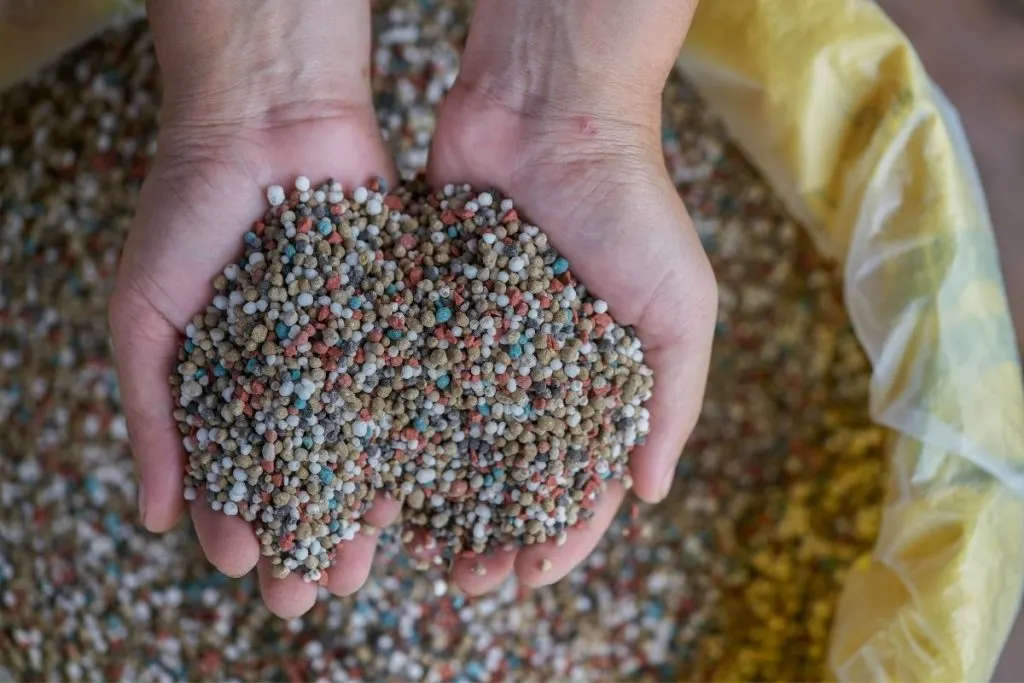
Organic fish fertilizer is the best fertilizer choice for lilies. It has all those perfect nutrients that this plant needs, especially during the blooming season.
Fertilizers with nitrogen shouldn’t be used on lilies or liquid fertilizers that you normally use for your other houseplants. Organic fish fertilizer will keep lily’s soil moist and cool.
Propagating These Fragrant Flowers
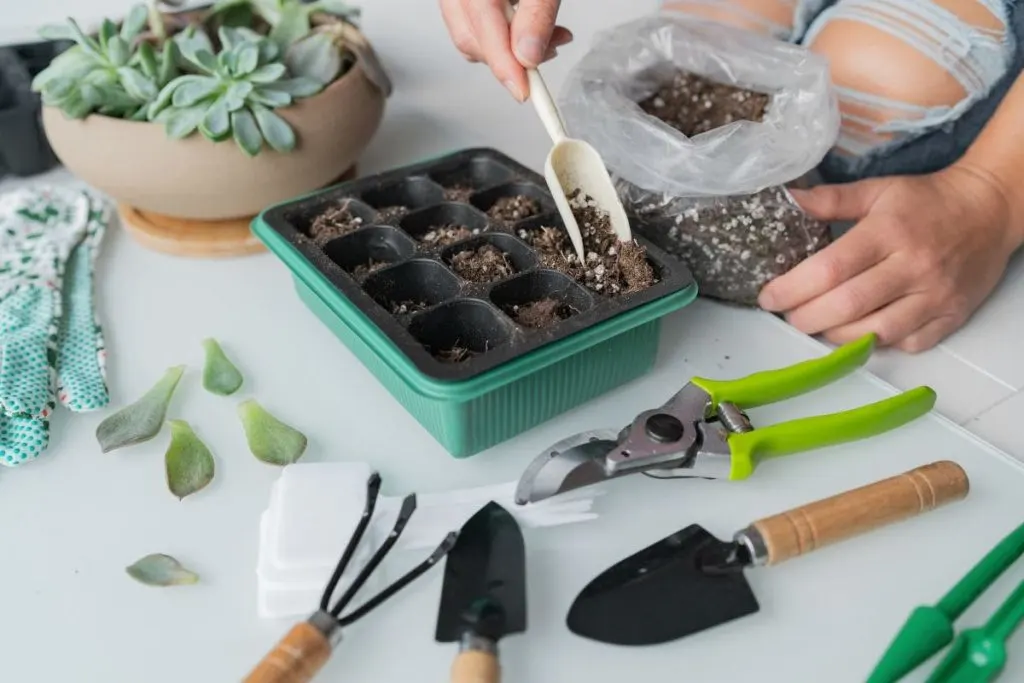
Lilies can be propagated by bulbs, seeds, and tissue culture. If you want to increase the number of hybrid lilies, when transplanting, the scales can be removed from the bulb and placed in an upright position in peat soil. After the first season, when they produce young leaves, the plants can be planted individually in pots.
Some lilies also produce small bulbs on the stems, below or above ground level. They can be removed at the end of the summer when they are almost ready to tear themselves off, and stored during the winter in boxes with a peat substrate.
- Seed propagation is a method suitable for original species, which turns out to be true to type, but not for hybrids. The plants obtained in this way bloom after 3 years. The seeds are collected in autumn and sown in spring, in deeper seed boxes with drainage holes. The seedboxes, after being covered with foil, are kept in a protected area. The seeds germinate in three to four weeks.
During this period, your lily needs a well-lit place protected from direct sunlight. Only then because otherwise, as we know, it likes direct sun. When the danger of frost has passed, the seed boxes are taken out of protected areas, placed in places protected from the wind, and covered with nylon at night. During later cultivation, the foil is completely removed.
How To Plant Lily Bulbs?
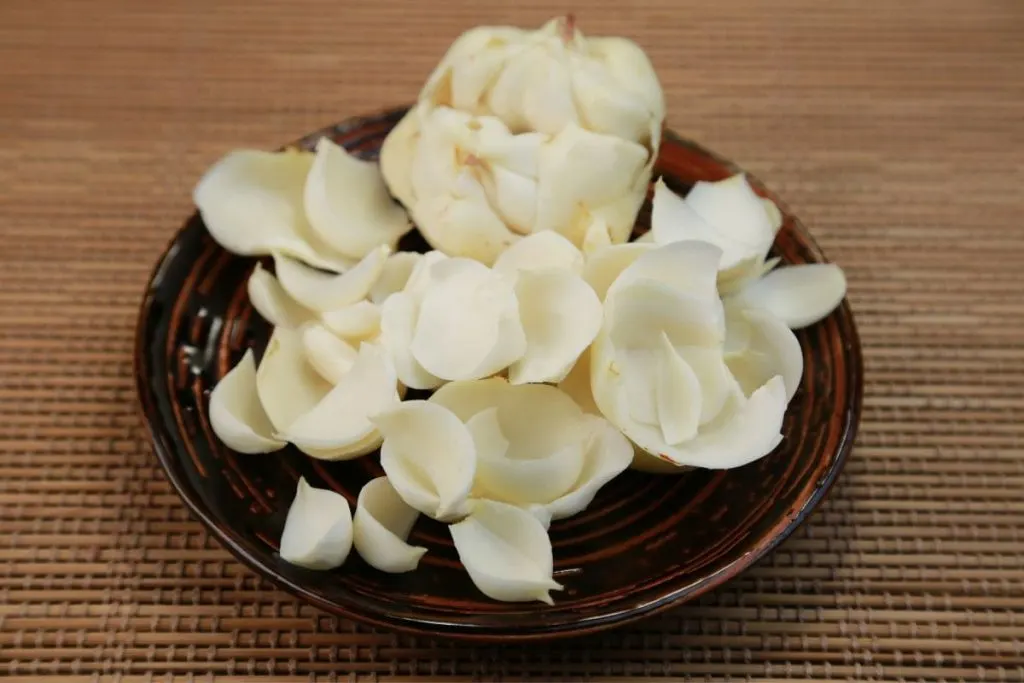
Ideally, you should plant lily plant in soil that it’s well moist and has a lot of sun with its roots of course.
If you bought a bit-grown pan already, you can do the same procedure, if not, no harm in that. When you plant them at first, fertilize that soil right away for a better “push” in their growing process. If you’re growing them in pots, do it in clay soil (heavy soils.)
Pruning Lily Blooms
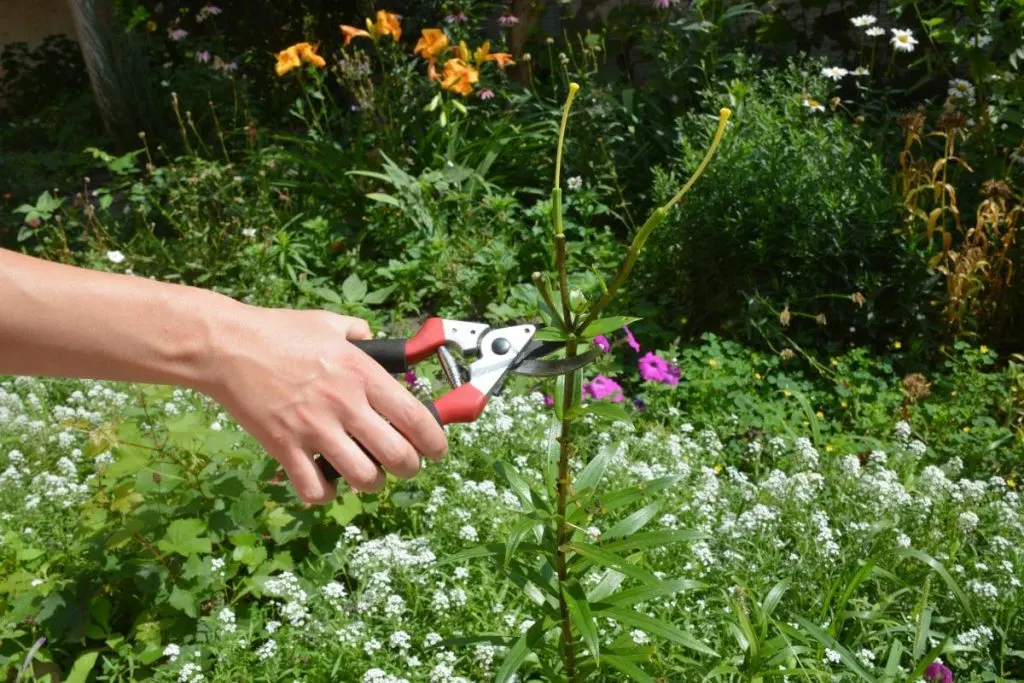
Pruning should be done for seed pods’ purposes as well. They take away the energy from your plant after the flowering time.
When you prune your flower, it has a much bigger chance of a healthy growing process in its next season.
As with other plants, if you want to be sure you’ve done it right, use sharp scissors for less damage or a sharp knife. However, usually, they need minimal pruning.
Pests And Diseases Of Lily Plant And What To Do When Lilies Have Finished Flowering
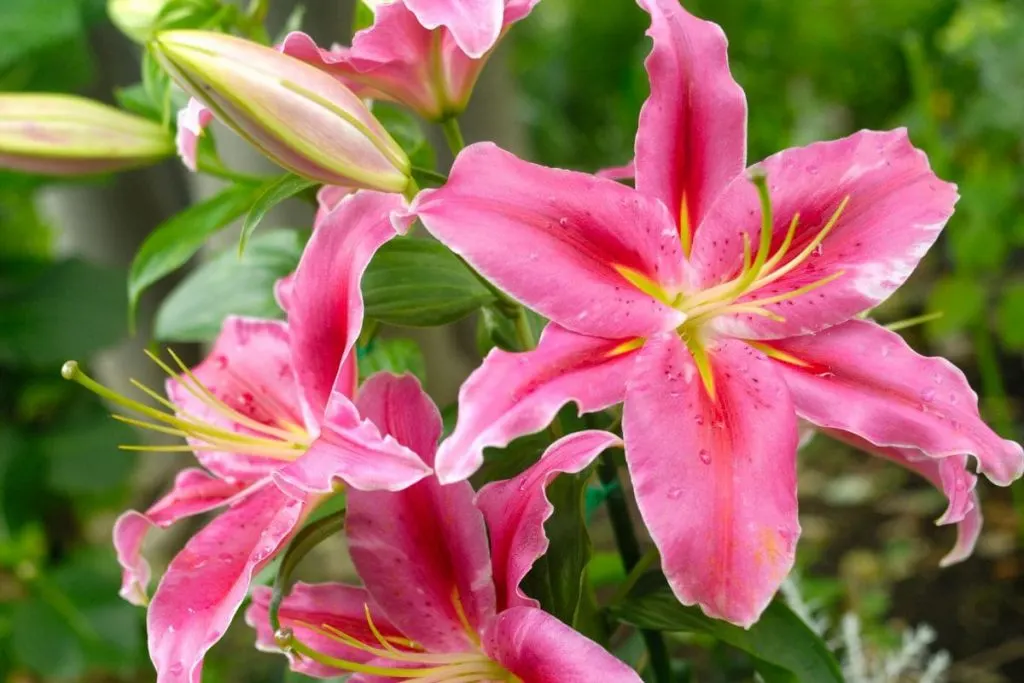
Most of them are quite dangerous and can do a lot of damage to your flowers. As soon as you notice these plant predators on your plant, react immediately.
They are merciless and work very quickly throughout the plant. From leaves and flowers, all the way to the stem. These are the most famous pests and diseases of the lily plant:
- Botrytis symptoms;
- Adult lily beetle;
- Lily beetle larva.
Fortunately for you, it is impossible not to notice these pests and diseases on your plant. The lily is a sensitive plant and immediately, and as soon as it emerges, it will show minor symptoms that will gradually increase as well as their effect.
- Beetle larvae are white-yellow, and sometimes black, and you will be able to spot them immediately. They are not so small that you cannot see them with the naked eye when watering the lilies. When the beetle is formed, it can be reddish. Then you will 100% notice them if you haven’t by then.
- The disease occurs when the soil is too drained, although this is good for your plant, sometimes you can overdo it when the temperatures outside are high. You will think that your plant needs extra care, but in fact, you will bring diseases and pests. Be careful! To get rid of this problem, dish soap and a soft sponge can be the first aid. If that doesn’t work, try just a little insecticidal soap.
Wintering Of Lilies Plants
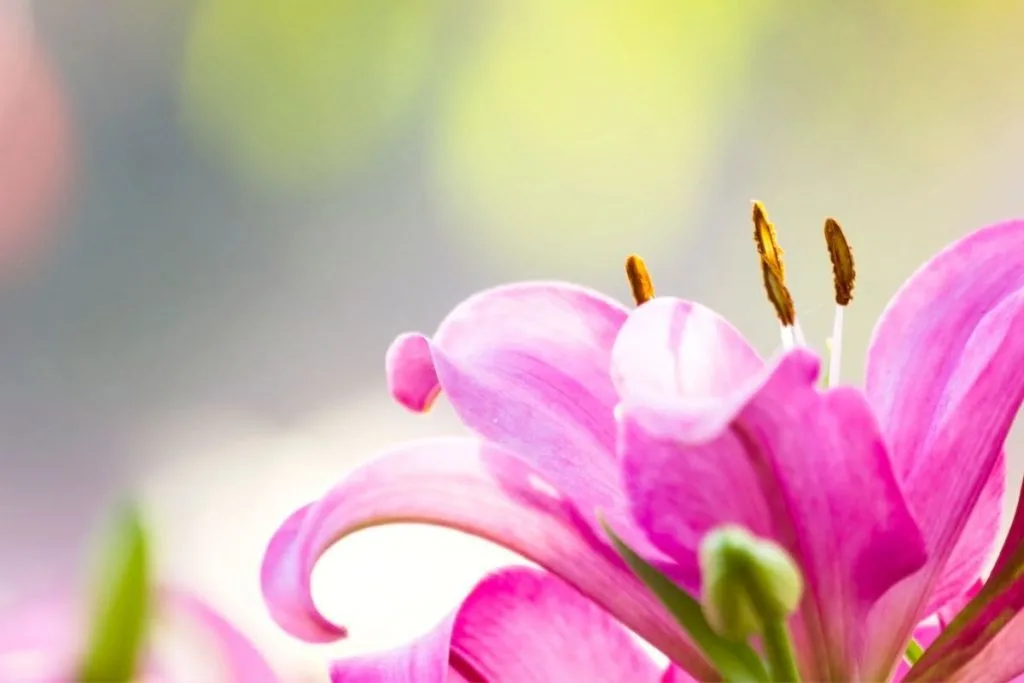
Over winter, you should place your lilies somewhere where there is a lot of fresh air coming in, temperatures can be a bit lower, it won’t harm them, and you should dig the bulbs from the soil.
Once you’ve done that hard main part, your lilies are more than ready for their wintering, As we mentioned above in the watering routine, in winter, you can water these plants fortnightly. Besides these, you have nothing else to worry about.
Use Of Lily Flowers And What To Do When Lilies Have Finished Flowering
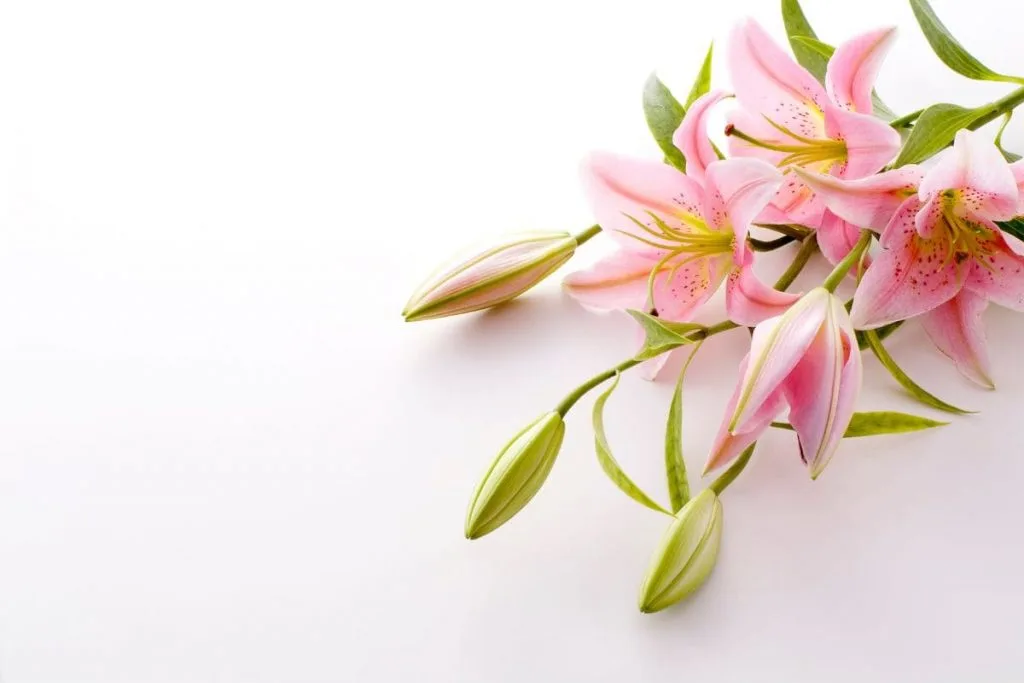
The use of these flowers is diverse. It is used for essential oils, essential oils, perfumes, it is used in making bouquets for weddings and other festive occasions, it is used for the daily beautiful look of our apartment in vases, etc.
Let’s learn a little more about its use.
Floral Arrangements With Lilies
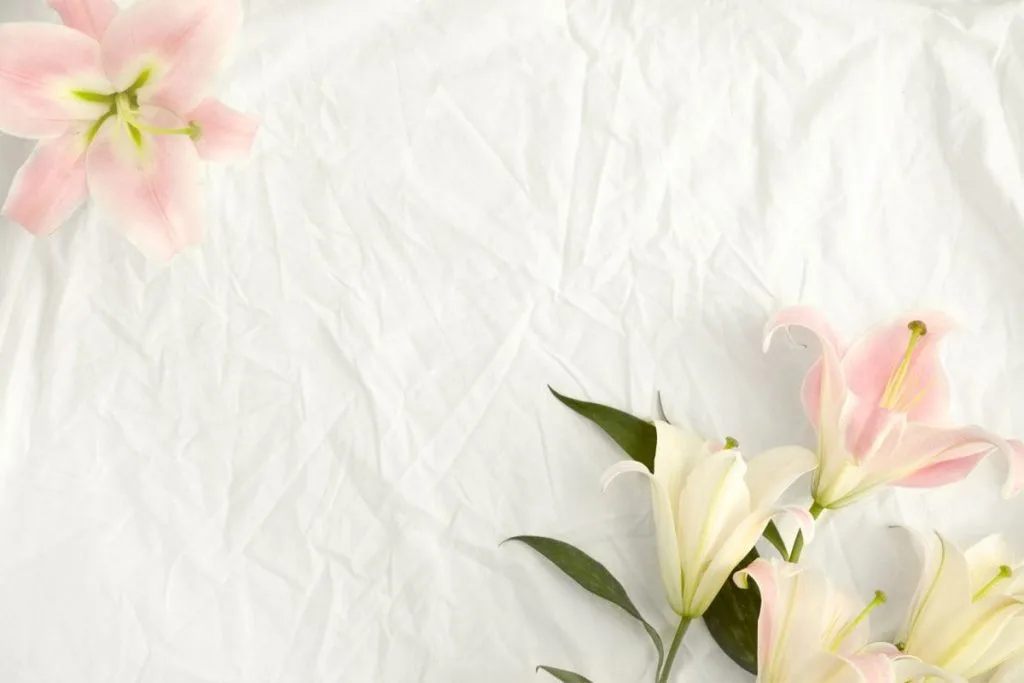
If you’ve been to a wedding ceremony or in a wedding salon recently, it is guaranteed that you saw lilies in flower arrangments.
It is almost inevitable to see wedding and wedding bouquets without roses and lilies. Because of their symbolism and elegance of appearance, they are used for these solemn ceremonies that mark wonderful chapters in life.
Regardless of the theme of your ceremony and the season, you will find the right lily for every occasion. Yellow lilies for autumn, white for spring and winter, pink, purple, and red for spring and summer. It will fit into any themed wedding.
Essential Oils Made Of Lily Flowers
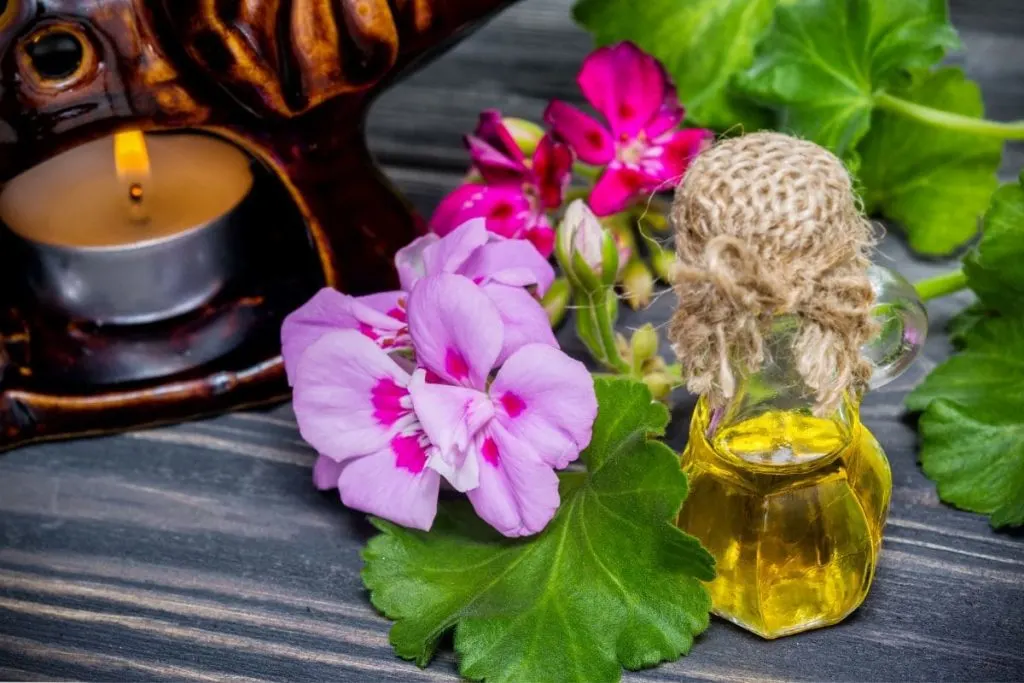
Essential oils made of lily flowers are often used to prevent the depression of aromatherapy. It can be a happy relief and the growth of negative emotions will vanish after a long time of use. Besides that, it simply smells amazing.
Imagine walking into a room and immediately getting that lily flower scent in your nose. Wonderful isn’t it?
FAQ – What To Do When Lilies Have Finished Flowering
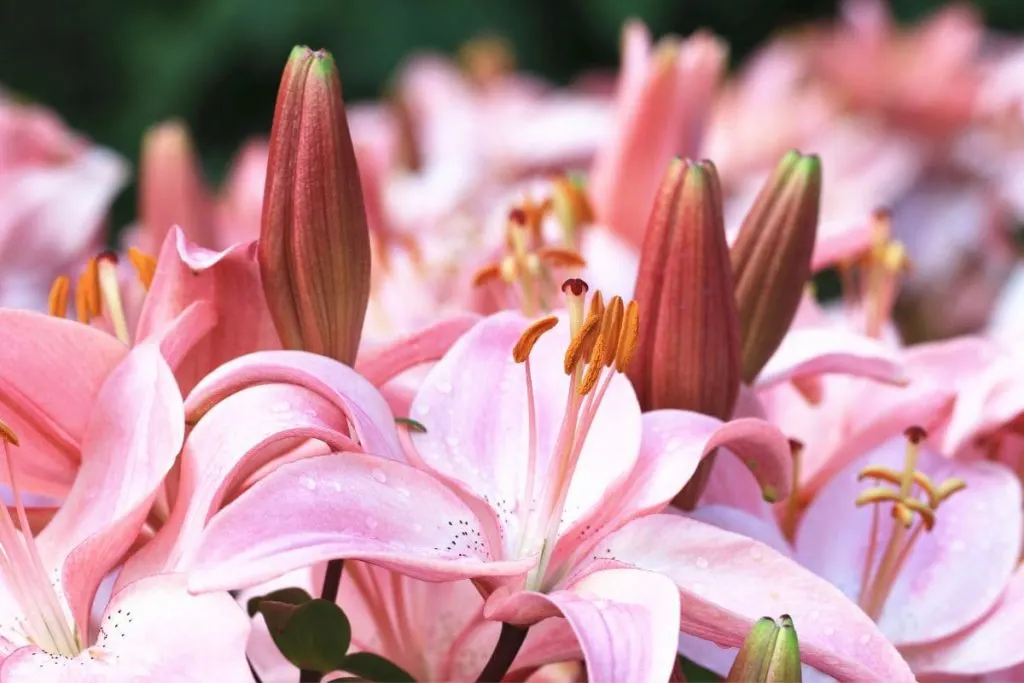
As always, we have this little special section for you that sums up all the information above you can know all about lily flowers once you’re done.
We prepared a lot of interesting things below for you. Let’s see more about lilies’ symbolism and whether are they a good indoor plant.
What Do Lilies Symbolize?
We mentioned above what the most famous 4 types of lilies symbolize, but those are not the only meanings of lily flowers. Types of lilies and their meanings are truly unique and that is another reason why people love them so much besides their gorgeous look.
Besides purity and rebirth, lilies can symbolize femininity, and fertility, and they are often connected to the Virgin Mary from a religious point of view (purity).
In some cultures, this flower can present chastity as well. Since they present sympathy flowers too, you can see them at funerals too, not just at weddings.
Are Lilies A Good Indoor Plant?
It depends on which type of lily flower we’re talking about, but generally, they are very good indoor plants. They will easily adjust to your home temperatures as long as you provide them with good light which is the most important part of their growing process.
They’re not a type of original lily flower look you’re used to, but peace lilies are the best indoor lilies. The peace lily is also one of the best plants for office with no windows.
History Of Lily Flowers
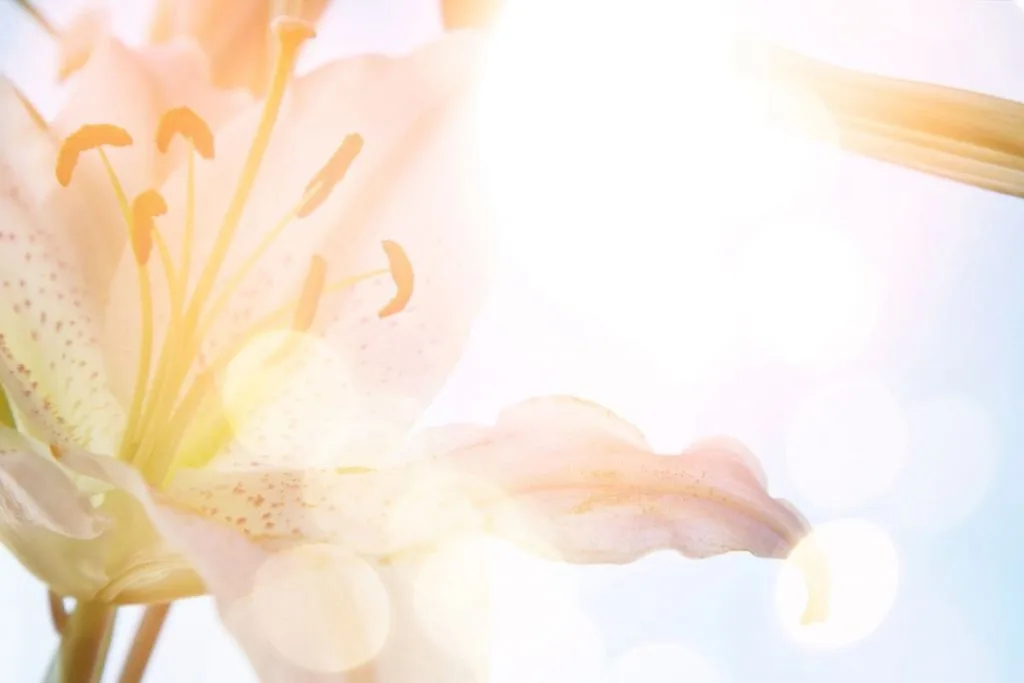
Historical references about this flower date back to 1700 BC. Images of lilies on frescoes and vases were popular in ancient Greece, Egypt, and Rome. In Persia, these flowers decorated lawns and royal courts, while the capital of ancient Persia, Susa, was called the city of lilies. The history of this flower is surprisingly rich, interesting, and sometimes contradictory. Many legends and stories mention these delicate flowers.
For example, according to ancient Greek tradition, these flowers appeared from the milk of Hera, the wife of the god Zeus. Legend has it that Queen Alcmene gave birth to a boy named Hercules and that she managed to hide it from Zeus. Fearing punishment, she hid the baby in the bushes. Hera found the newborn and decided to nurse him. Little Hercules felt the substitution and pushed the goddess Hera away. Milk sprinkled the sky and the earth. That’s how the milky path appeared and the lilies sprouted from the ground.
The lily is found in old Germanic mythology. For example, the thunder god Thor was depicted with a lily-crowned scepter. These flowers are also mentioned in old German fairy tales, where every lily had its own elf. These little miraculous creatures rang the lily bells every night and prayed fervently.
Final Thought On What To Do When Lilies Have Finished Flowering
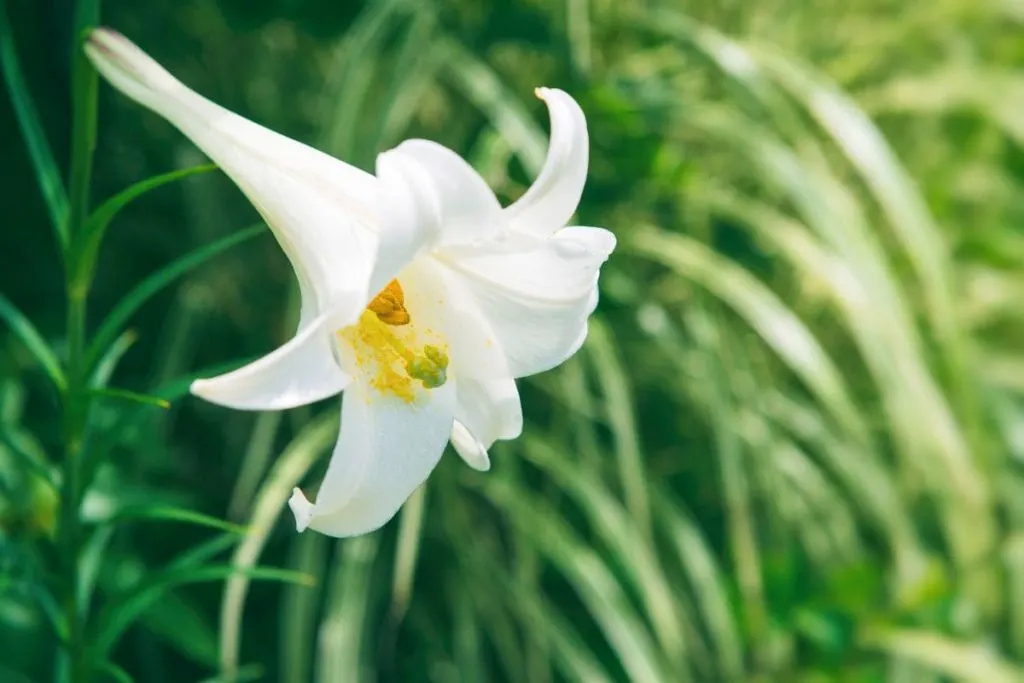
Today we learned a lot about lilies, and the most important thing was to find out what to do when lilies have finished flowering.
I hope that we have explained that, as well as every other part, clearly and well, and that you now know how to behave with your lilies in your home.
In addition, we learned the care guide for these flowers, which is the most important for every plant. Without it, there is no flowering period and without it, there is no post-flowering period.
In the faq section, we answered some interesting facts and thus ended the article about lilies.
That would be all for today, see you soon!
